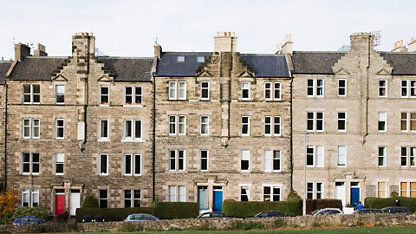Almshouses have existed in England for over a thousand years, and new almshouses are still being built. Almshouse charities provide social housing for over 36,000 people in around 30,000 dwellings. Most almshouse residents are older people (aged 50/60+ years), yet built environment and housing professionals, politicians and others concerned with the provision of housing for older people are more familiar with other social housing providers than with almshouse charities.
Published date: 02 December 2020
Research on almshouses tends to focus on their architectural and social history, detailing historic buildings, the past role of philanthropy, and the lives of residents, rather than their current or future role in housing provision. Recent reports addressing housing issues, and more specifically addressing rented housing for older people, have tended to concentrate on housing with care as solutions for future provision.
This research starts to fill the gap by taking a future-focused approach, looking at recent almshouse developments to inform housing provision in the 21st century. It explores their distinct and valuable contribution to housing older people to inform built environment and housing professionals, including architects and surveyors, funders, local authority housing and planning officers, prospective partner organisations, Homes England and the UK government.
This report was authored by Jenny Pannell and Dr Alison Pooley of Anglia Ruskin University.
The Chair of the RICS Research Trust, Professor Sarah Sayce, said: “we are delighted to have been the sponsors of this very pertinent and timely research. Affordable housing and housing for older people have attracted much publicity in the popular press and through academic research; however, the critical and unique role that almshouses play has been largely overlooked. The report provides important insights and assists the Trust in its aim of supporting work which advances knowledge for the public benefit.”
The CEO of the Almshouse Association, Nick Philips, adds: “during a thousand year history, almshouses have played an important part in providing homes for those in need. This report explores the characteristics of these small-scale micro communities that appear in almost every market town and city in England. Here Alison Pooley and Jenny Pannell identify the value of the architecture, the unique nature of almshouses as charitable enterprises, the drive of philanthropy in establishing them and the need and opportunity for more. The report also clearly identifies some of the barriers that are preventing almshouse development for the future – planning, awareness of their existence and lack of understanding of their great value to society. This report goes a long way to demystify and raise awareness of the beloved, valued asset of our community.”
RICS Research Trust is now the Property Research Trust
This research was funded by the RICS Research Trust. As of the end of January 2021, RICS Research Trust became fully independent of RICS, and has been rebranded as the Property Research Trust. Find out more here. The Trust supports and promotes high-quality independent contributions to knowledge in the disciplines of land, real estate and construction.'













